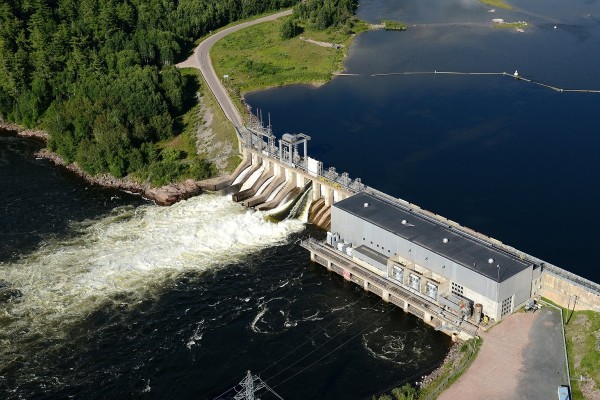The American Empire Meets Peak Oil
Following the Soviet collapse in 1989, the U.S.’s economic empire was left without any effective constraints except two: global warming and peak oil.
While Canada’s economic elite continues to push further integration into the American economic empire, it seems blissfully ignorant of the fact that globalization, the American Empire, is a falling star that is simply running out of gas.
The reason is “peak oil,” the peaking and future decline in supplies of crude oil. The American economy is not only based on oil, it is totally dependent on it. As North American oil supplies decline, the American Empire must expand, by force if necessary, to incorporate more and more of the world’s dwindling petroleum sources within its economic control.
Fossil Fuels and Empire
The British Empire’s expansion was fueled by cheap coal. By the 1850s England had become the “workshop of the world,” and proceeded to impose “free trade imperialism” on much of the rest of the world. But imperial overreach, war and technological change – the move from coal to oil – brought an end to the British Empire and, with it, a period of “de-globalization.”
As for the U.S. – fueled by its own supply of cheap oil, aided by the Bretton Woods financial institutions (the IMF, World Bank and GATT/WTO) – its empire began to expand after the Second World War. Following the Soviet collapse in 1989, the U.S.’s economic empire was left without any effective constraints except two: global warming and peak oil.

Fossil-fuel industrialism produces global-warming gases. Only recently have we have begun to realize how much these temperature-increasing gases threaten not only the global economy and ecology, but all human life on this planet. While the world (except the United States) has woken up to the threat of global warming, it has not seen the possibility that the problem may be self-correcting. Simply put, world oil supplies are peaking and will soon begin to decline. But that is like saying we don’t have to worry about dying of cancer, because we will die of heart disease first.
Richard Heinberg, in an article entitled “Oil, War and Terror,” describes the problem graphically: “The industrial revolution, still continuing, is all about replacing human and animal labor with the work of machines running directly or indirectly on fossil energy. Each day, the energy from oil used by people around the world equals the work of some 180 billion humans. It is as if the average global man, woman, or child had 30 slaves toiling around the clock. But those petroleum ‘ghost slaves’ are not evenly distributed. Each of us in the U.S. has, on average, more than 120 of them. This is the energetic basis of our American Way of Life.” What happens when these “slaves” die?
Emerging Crisis
In 1956 oil-company geologist King Hubbert forecast that, approximately 20 years after American oilfields began production, their output would begin to decline, following a typical “bell curve” pattern. Though ridiculed at the time, his prediction for the U.S. proved absolutely accurate. In 1970 output began to decline. A similar pattern has occurred in Canadian production of conventional crude. At the world level, supplies of conventional crude can be expected to begin declining approximately two decades after new discoveries reach their maximum, and this is now happening. Already it is estimated that 98 per cent of the world’s petroleum reserves have been identified, so “new” oil potential is virtually non-existent.
While world supply is increasingly constrained, world demand for oil is increasing exponentially, particularly in the emerging industrial powers of China and India. This means that the price of oil is unlikely to fall much from its current, elevated level and should, in the longer run, increase much more. Shifting to heavy oils, oil sands and oil shales will increase supply only temporarily, and at much higher cost, both in money and in energy inputs.
Already, Goldman Sachs has predicted oil prices spiking to U.S. $105 per barrel in the near future, though they do concede that, if the spike shocks American consumers into trading in their SUVs for hybrids and compact cars and to begin conserving energy, the price of crude could fall back temporarily, which happened after the oil crisis of the early 1970s.
Conditions in 2005, however, are very different than those in the 1980s. The major difference is that there no longer exists a significant excess pumping capacity anywhere in the world. Indeed, for many countries and oilfields, including Canada, the U.S., Mexico, Venezuela and the North Sea, production of conventional crude is falling. Matt Simmons, an investment banker, energy specialist and author of Twilight in the Desert: The Coming Saudi Oil Shock and the World Economy, has suggested that Saudi Arabia’s Ghawar field, the world’s largest, has already plateaued, and, given its very high pumping rate, risks imminent collapse. To make matters worse, U.S. production of natural gas, the best alternative fuel for heating and electricity generation, is also falling, while Canadian supplies are peaking. The alternative – liquid natural gas from offshore – is both expensive and dangerous.
We won’t know if we have reached the global oil peak until after it occurs, but most forecasts estimate it will occur between 2005 and 2010. Even the most optimistic are unwilling to push the peak beyond about 2020. Almost all agree that it’s not if, but when, world oil production will begin to fall. And when it does, real energy prices will begin to escalate. Ali Bakhtiar, the Iranian creator of the World Oil Production Capacity model, warns that prices could reach $125 per barrel by 2006 even before his predicted 2008 oil peak.
Transportation and Trade in Trouble
Two industries most affected by peak oil are transportation – which in the U.S. consumes around two thirds of its petroleum supplies – and agriculture. Rising transportation costs have the same effect as raising tariffs. Increasing the delivered prices of imports reduces international trade, particularly in goods shipped by air or truck, and for lower-value bulk goods where fuel costs are most significant. To the extent that increased transport costs reduce the price advantage to outsourcing, trade in goods – as well as American investment in countries such as China and Mexico, the major suppliers of American outsourcing – will decline.
James Kunstler dramatically illustrates the threat of peak oil to international trade and production in his book, The Long Emergency. “Anything organized on the large scale, whether it is government or a corporate business enterprise such as Wal-Mart, will wither as the cheap energy props that support bigness fall away…. Wal-Mart’s ‘warehouse on wheels’ won’t be such a bargain in a non-cheap-oil economy. The national chain stores’ 12,000-mile manufacturing supply lines could easily be interrupted.” Production and distribution will have to be re-organized on a local scale, he argues, and that will result in higher prices and less choice. The only economical form of transport will be rail. ”If we don’t refurbish our rail system, then there may be no long-range travel or transport of goods at all a few decades from now. The commercial aviation industry, already on its knees financially, is likely to vanish.” Perhaps a return of the trans-oceanic liners? In any case, global trade, investment and mobility – globalization – will contract.
The Road to Agricultural Ruin
Whatever the impact of peak oil on transportation, it appears minor compared to the impact on global agriculture. In his February, 2004 Harper’s article, ”The Oil We Eat: Following the Food Chain Back to Iraq,” Richard Manning describes agriculture’s dependency upon the petroleum industry. Today’s industrial agriculture, he argues, is unsustainable, and will collapse in the face of declining supplies and rising prices of oil. As Kenneth Deffeyes notes in his 2001 volume Hubbert’s Peak: The Impending World Oil Shortage, “90 per cent of an Iowa corn farmer’s costs were, directly and indirectly, fossil fuel costs,” not including the costs to transport food items an average of 1,500 miles to market in North America.
Fossil fuels are the product of millions of years of storing up the sun’s energy in the form of plant material compressed and heated to form oil, gas and coal. Through intensive, industrial agriculture, energy taken from the soil is increasingly being replaced by fossil-fuel-intensive fertilizer. ”On average,” Manning writes, “it takes 5.5 gallons of fossil energy to restore a year’s worth of lost fertility to an acre of eroded land…. Every single calorie we eat is backed by at least a calorie of oil, more like ten.” Processing the food for human consumption multiplies the energy costs. Processed breakfast cereal, he notes, uses “about four calories of energy for every calorie of food energy it produces. A two-pound bag of breakfast cereal burns the energy of a half-gallon of gasoline in its making. All together the food-processing industry in the United States uses about ten calories of fossil-fuel energy for every calorie of food energy it produces,” not including transportation costs to market.
He even challenges vegetarians’ claims that moving down the food chain will significantly reduce fossil-fuel consumption, since both the initial production of vegetable crops and the processing of cereals, soy and lentils are heavily energy-intensive. Similarly energy-intensive is the production of ethanol and bio-fuels as alternatives for transportation. At the best estimate, it takes four litres of fossil fuel to produce five litres of ethanol. So, if the price of fossil fuels takes off, so will the price of ethanol. And just replacing oil with ethanol as car and truck fuel would require the entire arable land mass of the United States, leaving no room for people to live or grow food!
Pressure’s On
All the agencies of international capitalism (WTO, IMF, WB, OECD, U.S.) have been pressuring developing countries to abandon food self-sufficiency in favour of exportable cash crops. However, the rising cost of producing and transporting cash crops and the rising prices of subsistence food imports will force poor countries to return to local production for subsistence, despite any loss in total productivity. But local production means not only the end of international agribusiness, but also smaller food supplies for large urban centres, which now dominate both the industrialized and the developing worlds.
Everywhere there will be need for increased labour-intensive agriculture, a rising rural population and a falling urban one – and a smaller world population. Further, rising prices for kerosene and cooking fuels will force many in poor countries to return to cutting local forests, thereby increasing soil erosion and drought, and further decreasing food supplies. This has already occurred in oil-rich Nigeria. Since independence in 1960, 85 per cent of the country’s forests have been cleared; once Africa’s biggest agricultural exporter, Nigeria is now completely dependent on imported food.
Governments with Heads in the Sand
Petroleum powers much of the world’s manufacturing activity, including plastics, pharmaceuticals, agricultural chemicals and fertilizers. Further, not only does it fuel manufacturing, it smelts and refines our metals, generates electricity, heats and cools our homes and offices, and – perhaps most importantly – fills the tanks of our gas-guzzling vehicles. As Dr. David Goodstein notes in his article, “Running Out of Gas,” “Our vehicles, our roads, our cities, our power plants, our entire social organization has evolved on the promise of an endless supply of cheap oil.” Dramatically, he concludes: “Civilization as we know it will come to an end some time in this century, when the fuel runs out.”
Politicians have blissfully ignored the impending peak-oil crisis. Indeed, many governments in Canada have gleefully anticipated higher oil prices hoping to grease their provincial economies – particularly Alberta, which stands to gain from rising oil and gas prices in the medium run. However, even Alberta’s supplies of conventional oil are already declining, and, though spiraling crude prices have spurred production of synthetic oil, it comes at a heavy cost in pollution, water consumption and energy use. (The French firm Total has been exploring the idea of building a nuclear plant to provide the required energy.) In the longer run, synthetic oil, too, will be subject to its own peak.
Canadian industry is more aware than governments of the tar sands’ limits. Writing in Canadian Business, Andrew Nikiforuk observed that, “Like most big energy projects, Alberta’s oilsands will deliver more hyperbole than oil … the ever-prudent BP Statistical Review lists only 16.9 billion barrels as recoverable and under active development.” Higher estimates “just don’t reflect economic, environmental and engineering constraints.” They also ignore that synthetic crude production uses enormous amounts of natural gas and that “the burning of gas to make oil [is] a process akin to turning gold into lead.” Furthermore, it takes about 1.5 barrels of water – a resource of which Alberta is already short – to produce one barrel of oil.
Warnings Unheeded
Meanwhile, the United States is developing its own energy policy, with horrendous global implications. The Bush Administration has received numerous reports on peak oil and the threat it poses to the “American way of life” from academic, military and private sources. (See, for instance, Robert Hirsch, et al., “Peaking of World Oil Production: Impacts, Mitigation and Risk Management,” commissioned by the U.S. Department of Energy.
As early as April, 2001, the U.S. Council on Foreign Relations reported to Bush that, “As the 21st century opens, the energy sector is in critical condition…. The world is currently close to utilizing all of its available global oil production capacity, raising the chances of an oil supply crisis with more substantial consequences than seen in three decades.”
But rather than attempting to reduce consumption, conserve oil and develop alternatives, the U.S. has been expanding its empire to capture control of remaining world supplies. When asked what America’s energy policy was, the Weekly Standard’s Irwin Stelzer reportedly replied, “Aircraft carriers.” The wars in Afghanistan, Iraq, Colombia and Yugoslavia; the war being planned against Iran; the attempted coup in Venezuela; regime changes orchestrated and/or attempted in Georgia, Ukraine, North Korea and Lebanon; and the rearming of Japan and establishment of military bases throughout southeast Asia and eastern Europe have all been tied to the U.S.’s search for control of the world’s remaining oil supplies.
Control of oil is critical to the U.S. because globalization, the American Empire, the U.S. economy and the American way of life all depend on oil. U.S. per-capita consumption is approximately 25 barrels per year – double that of western Europe, more than five times the world average and 16 times higher than that of China. The U.S. produces only a third of the oil it consumes, so that its dependence upon imports was rising even before the hurricanes further reduced domestic supplies. And maintaining an empire is very expensive and energy-intensive.
This article appeared in the January/February 2006 issue of Canadian Dimension (Politics and Religion).










